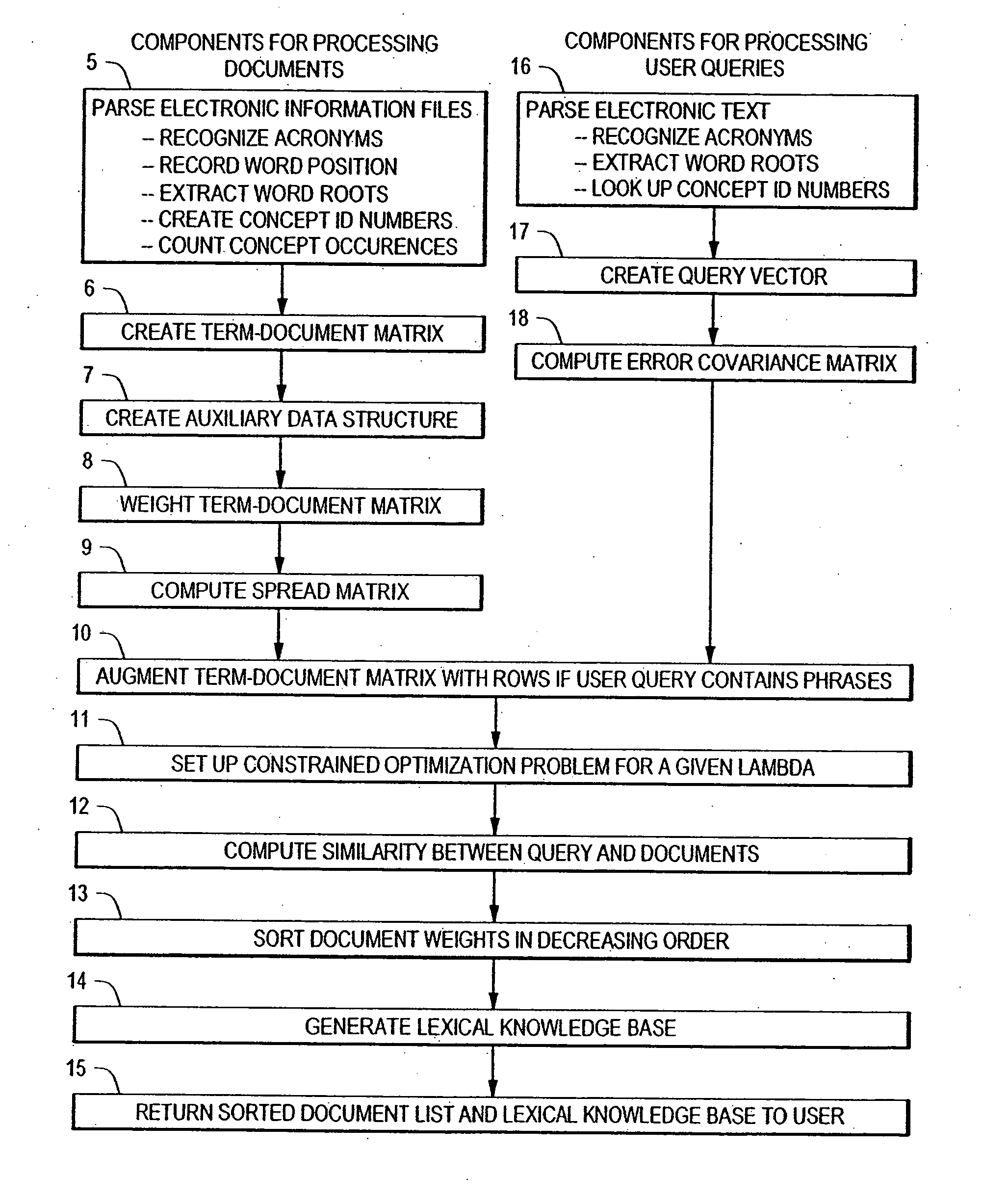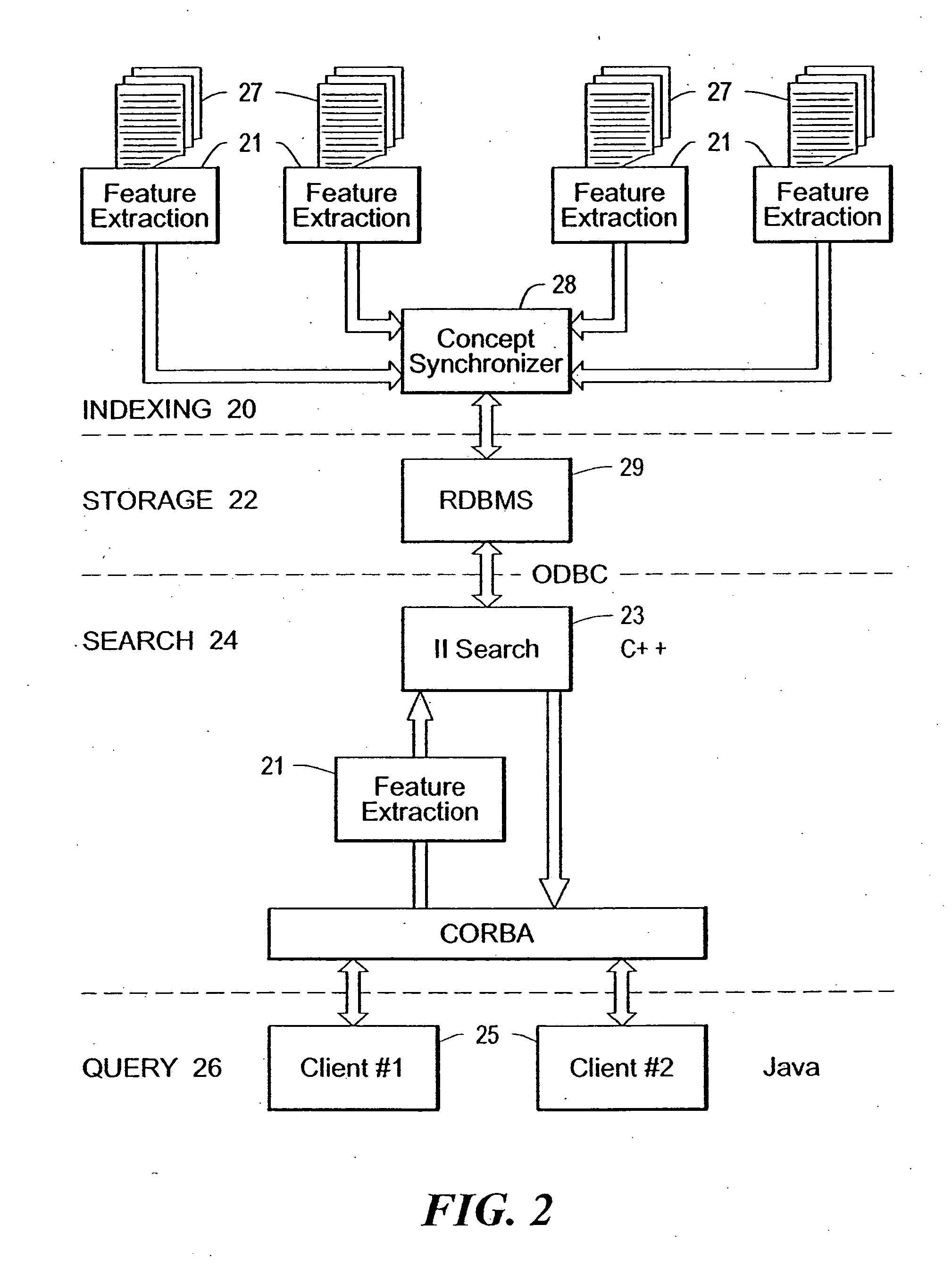Extended functionality for an inverse inference engine based web search
a technology of inference engine and web search, applied in the field of extended functionality of inference engine based web search, advanced system for cross language document retrieval, can solve the problems of limiting the amount of information available for semantic learning, serious limitations of approach, and tens of thousands of documents that typically take several hours to index, etc., to achieve fast and scalable effect, improve efficiency
- Summary
- Abstract
- Description
- Claims
- Application Information
AI Technical Summary
Benefits of technology
Problems solved by technology
Method used
Image
Examples
Embodiment Construction
Information Retrieval Overview
Information retrieval is the process of comparing document content with information need. Currently, most commercially available information retrieval engines are based on two simple but robust metrics: exact matching or the vector space model. In response to an input query, exact-match systems partition the set of documents in the collection into those documents that match the query and those that do not. The logic used in exact-match systems typically involves Boolean operators, and accordingly is very rigid: the presence or absence of a single term in a document is sufficient for retrieval or rejection of that document. In its simplest form, the exact-match model does not incorporate term weights. The exact-match model generally assumes that all documents containing the exact term(s) found in the query are equally useful. Information retrieval researchers have proposed various revisions and extensions to the basic exact-match model. In particular,...
PUM
 Login to View More
Login to View More Abstract
Description
Claims
Application Information
 Login to View More
Login to View More - R&D
- Intellectual Property
- Life Sciences
- Materials
- Tech Scout
- Unparalleled Data Quality
- Higher Quality Content
- 60% Fewer Hallucinations
Browse by: Latest US Patents, China's latest patents, Technical Efficacy Thesaurus, Application Domain, Technology Topic, Popular Technical Reports.
© 2025 PatSnap. All rights reserved.Legal|Privacy policy|Modern Slavery Act Transparency Statement|Sitemap|About US| Contact US: help@patsnap.com



